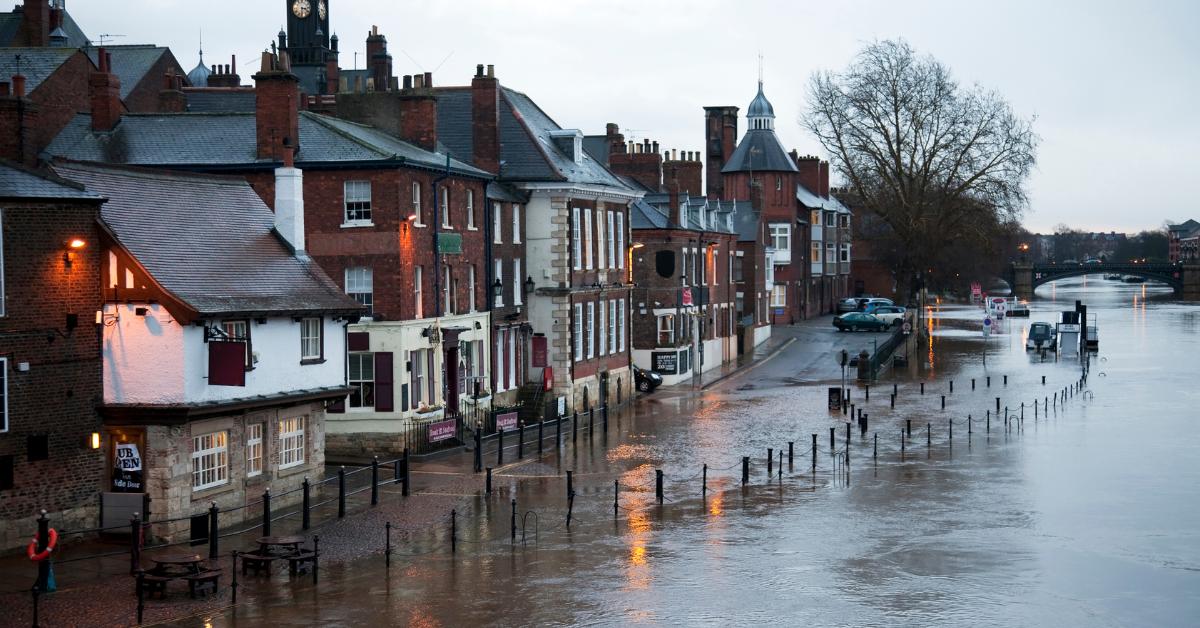Flooding is a common occurrence in the United Kingdom. The entire country is frequently at risk of heavy rainstorms and flooding throughout the year, costing tens of thousands of pounds in damage.
However, there are rapid-deployment solutions local councils and non-governmental organisations can use to protect lives and property from flooding.
When Does Flooding Occur in the UK?
Flooding events can occur during any season in the UK. While most regions of the UK are no strangers to rainfall throughout the year, periods of relentless heavy rainfall can overwhelm drainage systems, causing flooding as the water backs up.
Furthermore, floods can also occur during periods of heavy snowmelt at higher elevations—particularly in Scotland, which averages 38.1 days of snowfall or sleet in a single year. Floods are also a risk when sudden, severe rainstorms strike after a prolonged drought, as the ground is less capable of absorbing water quickly.
How Climate Change Affects UK Flooding
As global temperatures continue to rise each year and cause clouds to hold more water vapour, flood defence becomes more and more necessary. This is due to the increasing severity of weather events as the global climate destabilises.
Furthermore, as the global temperature increases, polar ice caps are melting at alarming rates, threatening coastal regions with additional flooding. As floods become more and more frequent, flood barriers become more necessary to protect lives and property.
How to Get Effective Flood Protection in the UK
Flood walls and other types of permanent flood protection barriers can be costly and take years to complete, leaving populations vulnerable in the interim.
However, there are also temporary flood protection solutions that can effectively protect lives and property as a supplement to flood doors and other permanent barriers. TrapBag® is a cost-effective solution to protect residential, commercial, and agricultural properties from flood damage.
How Does TrapBag Work?
An individual TrapBag barrier comprises a series of pentagonal cells made of high-strength textiles, measuring roughly 15m per section. Each cell is sloped on one side and flat on the other, with an opening at the top for easy filling. All the cells are interconnected on the sides like an accordion—while each one is self-contained, they support each other to provide added strength to the entire barrier.
TrapBags can be filled with sand, concrete, or washed gravel for a watertight flood defence barrier that has been successfully tested by the United States Army Corps of Engineers.
Where Have TrapBags Been Deployed?
TrapBag flood control barriers are used around the world to protect vulnerable, low-lying areas from flood damage. Local authorities, construction companies, and non-government organisations in the United States, Canada, Kenya, and beyond have deployed TrapBag barriers to protect properties, lives, and entire neighbourhoods from flood damage.
Using TrapBag as Flood Protection in the UK
Erosion Control
Floods can have devastating effects on shorelines, causing beaches and cliff structures to wash away. In turn, this puts seaside structures like homes, roads, and businesses at risk of damage after coastal flooding events—potentially destabilising coastal areas even further.
Environmental protection groups and NGOs have used TrapBag along beaches and riverbanks to prevent soil and sand erosion. Placing TrapBag barriers along shorelines allows the bags to bear the brunt of force from constant wave action, preventing the sand and soil from washing away over time.
Seawalls
During major coastal storms and floods, seawalls prevent severe wave action from devastating coastal habitats, neighbourhoods, and infrastructure like bridges and roads. Since TrapBag barriers can be stacked atop one another, they make an excellent seawall solution ahead of major coastal storms.
Levees
Emergency management personnel often place temporary levees alongside rivers and streams that are projected to flood their banks. Many rivers throughout the UK have permanent embankment levees to mitigate lesser floods.
TrapBag makes an ideal temporary, rapid-deploy levee system during flooding events. They can also be placed on top of existing levee structures near rivers to reinforce them during periods of major floods. This adds additional height and strength to reinforce the structure during the most extreme weather events.
Get a Free Quote on TrapBag
TrapBag is an ideal solution for mitigating flood damage of all types quickly and easily. Get a quote from our experts today to take proactive steps toward flood defence.


